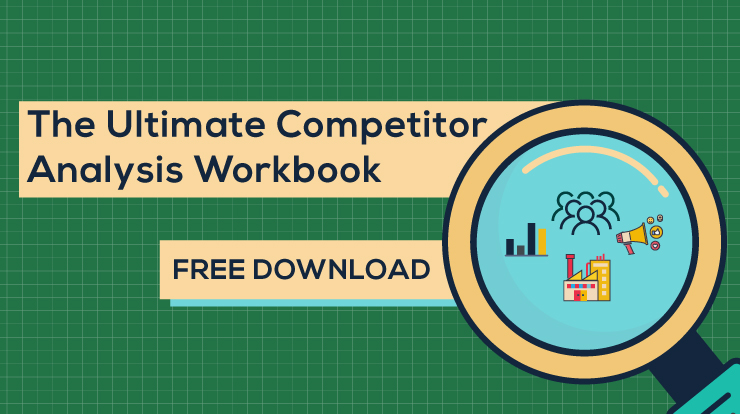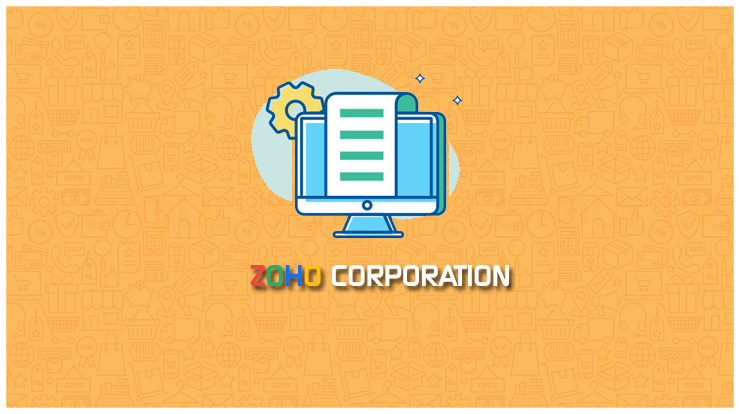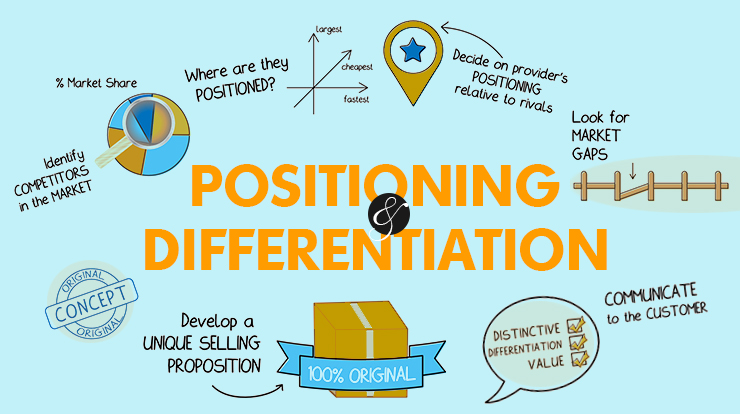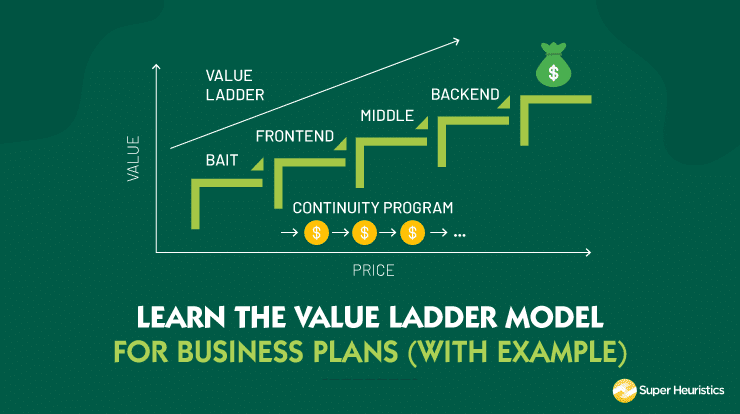
Are you doing a Competitor Analysis for your company that is complete in the truest sense? Chances are that you are missing out on a few key points that could make a great difference on how effective your analysis will be. This free to download Competitor Analysis Workbook gives you a checklist of 100+ factors that you must cover in your competitor analysis.
How often do you do run a competitor analysis for your company? More importantly, what all is that you cover in your competitor analysis?
Chances are that you usually end up scraping their websites to get a sense of what they are up to in their business. But when you do that, you are blocking out on a lot of competitor intelligence that can take you really far ahead in your competitor analysis exercise.
What I have done here is broken down the entire exercise of competitor analysis into bits and pieces. I bring to you The Ultimate Competitor Analysis Workbook in which I list down those 100+ points that need to be compared for a thorough competitor analysis.
Download the free Ultimate Competitor Analysis Workbook here
Why do you need to do Competitor Analysis?
When it comes to the use of a competitor analysis, there is more to it than it seems there is. A good and insightful competitor analysis would help in
- Observing the market trends
- Identifying what are the gaps in the market
- Discern new product opportunities
Moreover, what isn’t clearly apparent is that all of these, in totality, will help you form your most brilliant go-to-market strategy. Which brings me to the point that, in your internship, your workplace or even in your college, in the strategy or marketing classes – if you are asked to formulate a go-to-market strategy, you have to and have to do a competitor analysis.
Competitor Analysis isn’t a deliverable anymore. If you are working on a project that you have to strategize and bring to life then competitor analysis is an integral part of it – yes, even if you haven’t been explicitly asked to do it.
Therefore, if you think this isn’t for you then let me tell you it surely is.
If you are an effective marketer, you need to be on the constant lookout for the latest online and offline marketing tactics being used by the competitors in the industry.
What keywords are they betting on?
What is the social media strategy?
Where are they with their on-ground promotions like?
If you are a salesperson, you definitely need to have the competitors’ products at your fingertips. You need to keep a tab on which channels of sales do they utilize and counter them right there!
In fact, if you identify yourself aspiring to make a career in Sales, Marketing, Operations, Finance, Strategy, HR, and Analytics? Yes? Then this Competitor Analysis template is what you need right now.
What is in this Competitor Analysis Workbook?
Through this Competitor Analysis Workbook, I help you in neatly organizing 100+ data points that you need to compare.
The workbook gives you a heading-by-heading break up all the points you need and where you need to put them. At the bare minimum, this workbook gives you a checklist of all the points that are to be researched about the competitors.
Let’s quickly take a look at what points are we exactly comparing.
1. Company Information
You would see in the workbook that these are basic facts about the competitors. These set up a good background to understand when were the competitors established, who runs them, who are their investors etc. The easiest to find and fill in.
2. Products
This is where the real comparison begins. Usually, you compare your competitors on the basis of their products. In this workbook, list down as many products as you want to compare and jot down crucial things about them across the competitors.
3. Price
Closely aligned with the product, you would surely want to do a thorough price comparison. This workbook takes you beyond the price comparison to make you think about the discounts and return policy of your competitors as well.
4. Promotion
Any promotion strategy is centered around the brand of the company. In your competitor analysis talking only about what the brand is today isn’t always enough. Covering a brand story is what is relevant. The entire journey of how your competitor became what it is today.
Crucial elements of a brand are the markets it serves, its online promotion strategies and offline promotion strategies. The Competitive Analysis Workbook includes fields for all of these.
5. Distribution
Irrespective of whether you are an e-commerce company or a manufacturing firm or even a blog, you are definitely into the distribution of some product, service or experience.
So if you are an e-commerce or a manufacturing company, you are distributing products. If you are a telecom company you are distributing services. If you are a blog, like Super Heuristics is, you are distributing information.
Track all the channels of the distribution of the company. This is an important factor of the go-to-market strategy for your company.
6. Website Statistics
If you are not an online business I am sure for each buck that I have that you are ignoring this aspect of competitor analysis completely. And when I say ‘online business’ I don’t mean a brick and mortar business which has a website. I mean a business whose distribution stream is online.
The single-most reason why you would tend to ignore auditing the website statistics of your competitors is that you don’t care about your own website statistics as well!
So while you may underestimate the potential of what online can do for you, you need to pay a lot of attention to what are your websites up to.
Which of my competitors is ranking higher on Alexa?
Which ones are betting on which keyword?
How much traffic is everyone drawing in?
Web presence is the most beneficial thing you could invest in. And that is why website statistics is a crucial part of this Competitor Analysis Workbook.
7. Mobile Apps
Closely aligned with your digital strategy are your mobile apps. While it is currently believed that mobile apps are an extension of your online presence, this notion isn’t going to remain this way for long.
As the number of people accessing the internet on their mobiles is increasing, mobile apps are coming at the center and everything else, the websites and everything, are becoming the extensions. Just the opposite of what it is today.
Which means mobile apps are the things you need to strongly care about when talking about your digital presence.
The workbook compares the mobile apps across various metrics.
8. Sales and Cost Figures
Everyone likes numbers! Especially your boss. Give them some real sales data of your competitors. You could find most of this in their annual reports of other financial statements released to the public on their websites.
Mentioning cost figures would be the icing on the cake.
9. Customer Reviews
Another grossly ignored and underestimated metric for comparison is the customer reviews. What your customers think about you and your competitors. While all the numerical analysis is good, analyzing the customer feedback gives the inputs on how are the competitors being perceived by the customers and what aspects of their products or services are being appreciated or disliked.
As a research analyst, you should be able to pick these things up and probably offer a solution to those customers who are dissatisfied.
10. Recent Media Coverage and Mentions
Lastly, what sort of media coverage your company and your competitors get is also a crucial point to be taken into the view. While you are comparing the different brands, media coverage and mention makes a big difference. Take note of these in the Competitor Analysis Workbook.







